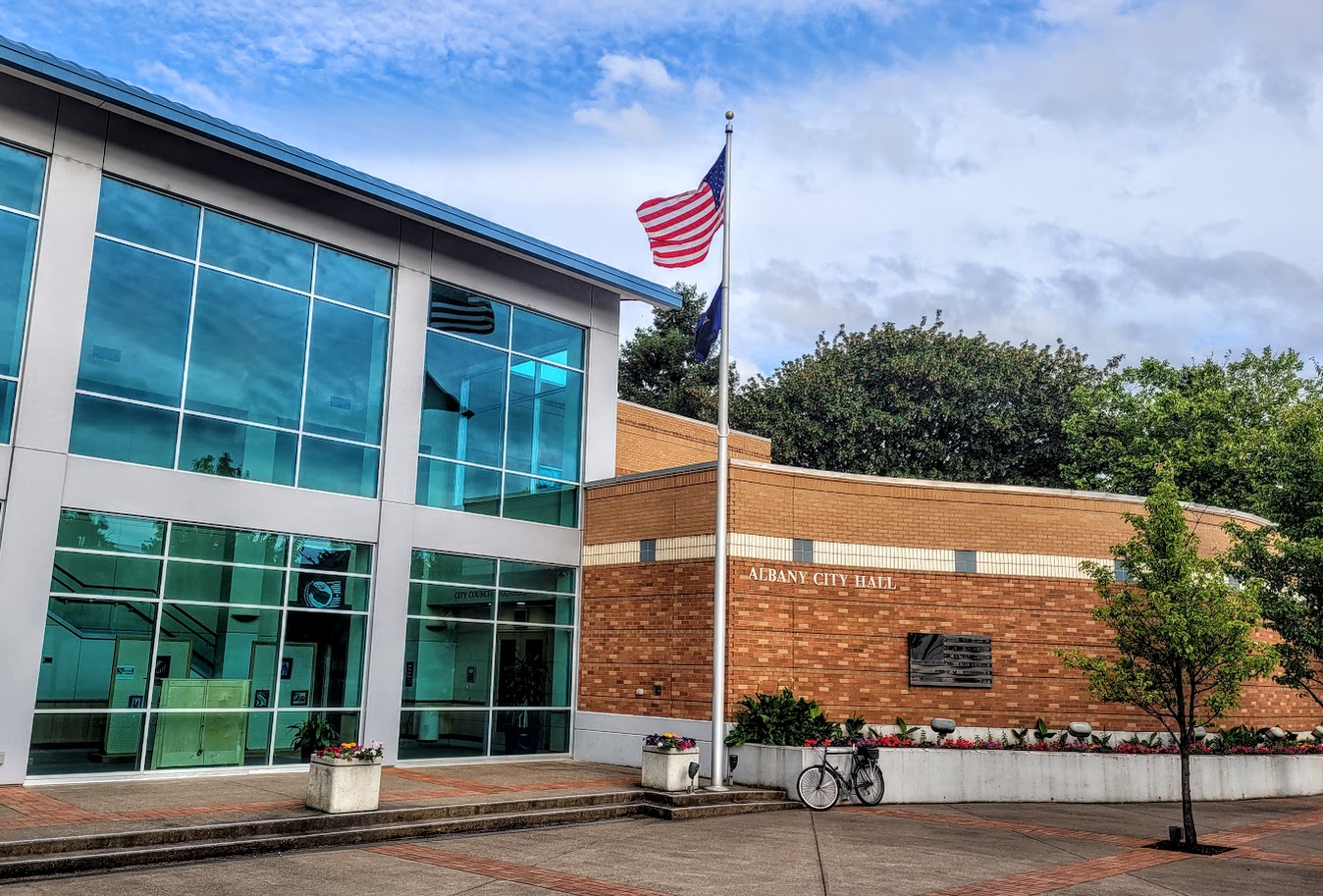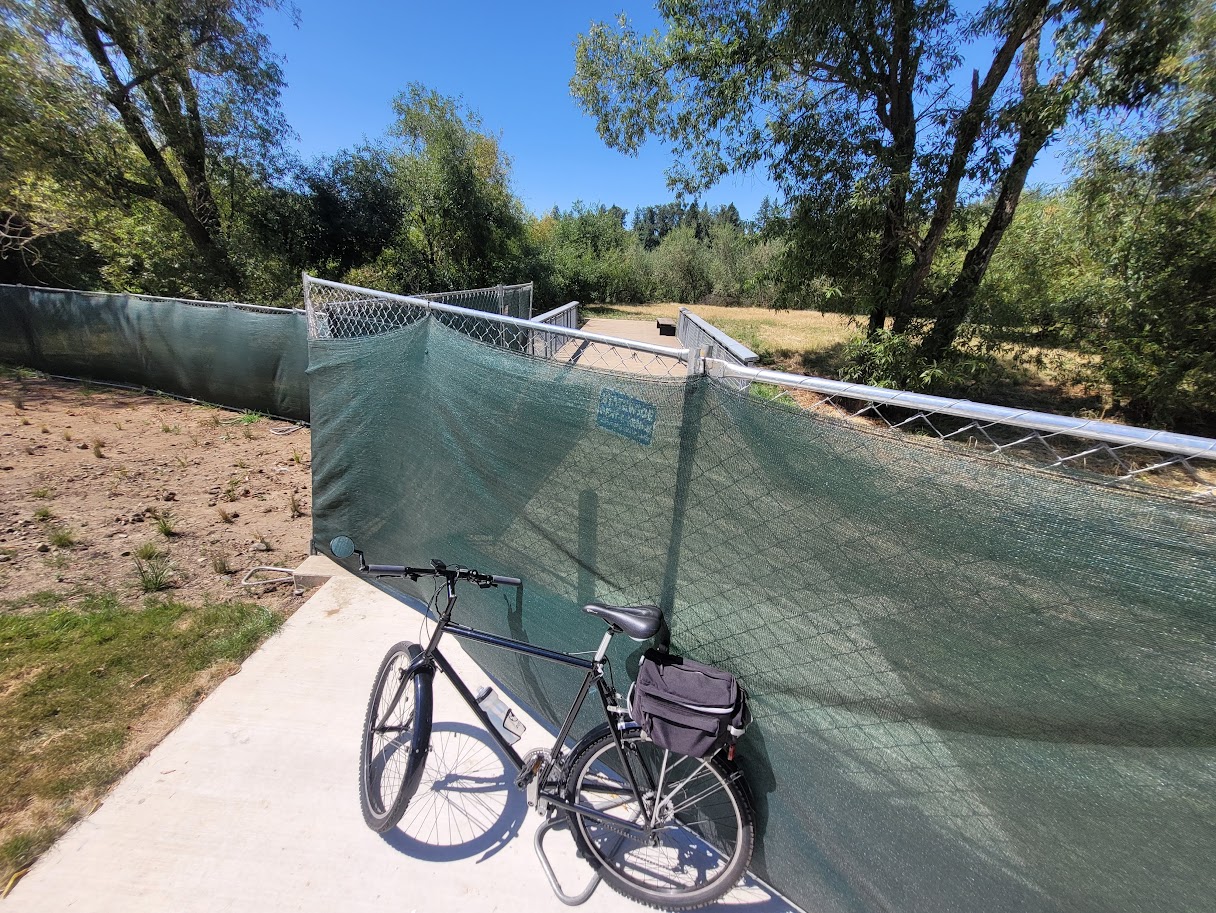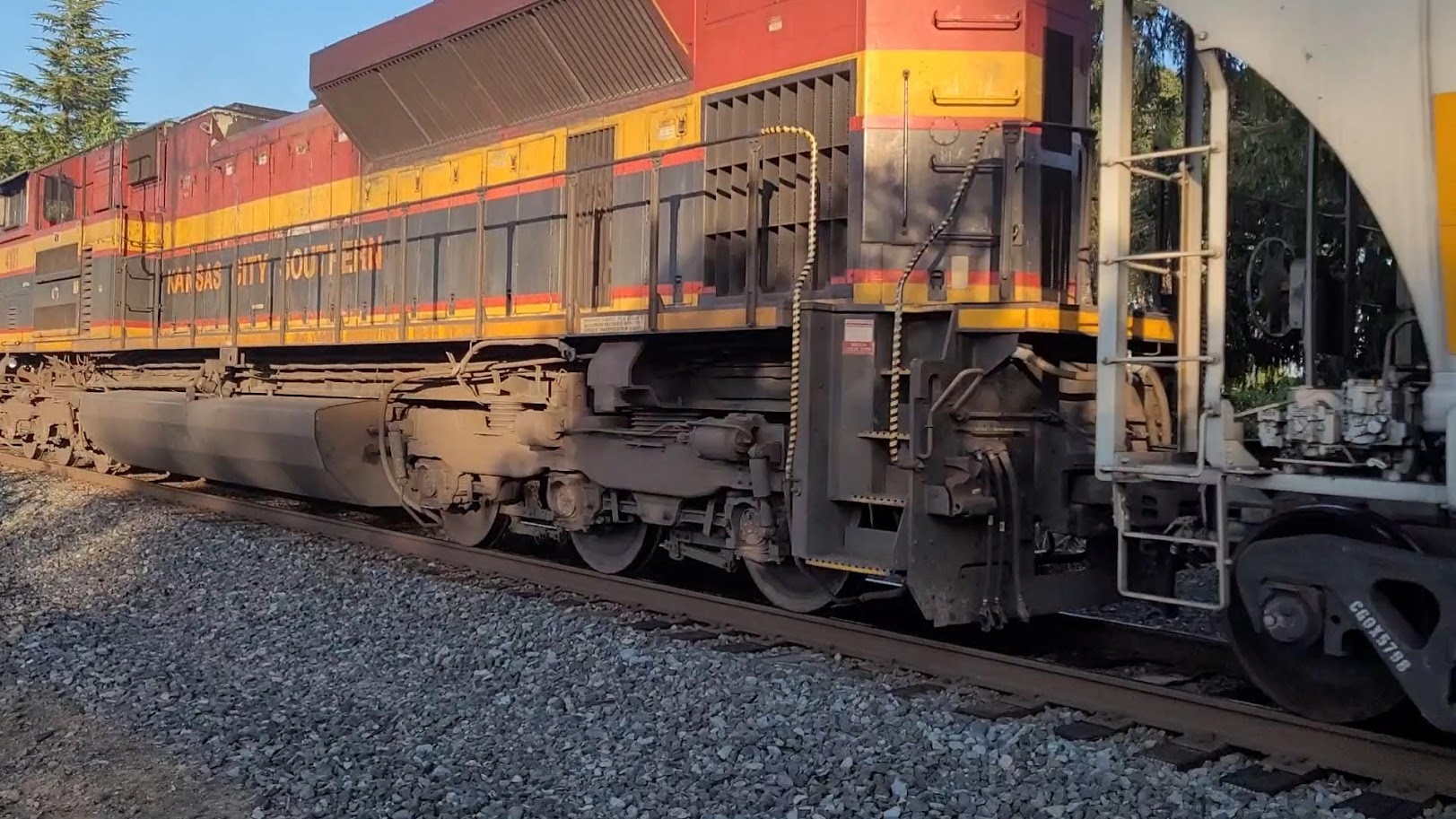
The Albany City Council is looking at a report on the feasibility of setting up new urban renewal districts to spur development east of I-5 and the south part of town.

As part of the Monteith Riverpark renovation, the City of Albany built a short boardwalk for easy access to a brush-covered gravel bar at the confluence of the Calapooia and Willamette rivers. But you couldn’t go there Sunday.

Having torn myself away from the national news Saturday night, I was taking my usual bike ride through the east end of old Albany when I heard the horn of a train coming down from the north.

Down to the river, an unexplained fence
There was still a section of concert fencing across a new path in Monteith Riverpark Friday. It didn’t necessarily keep people from getting to the riverbank, but why keep a fence there at all?
Tags: Albany rivers, boardwalk, Monteith Riverpark, parks, riverbank, Two rivers